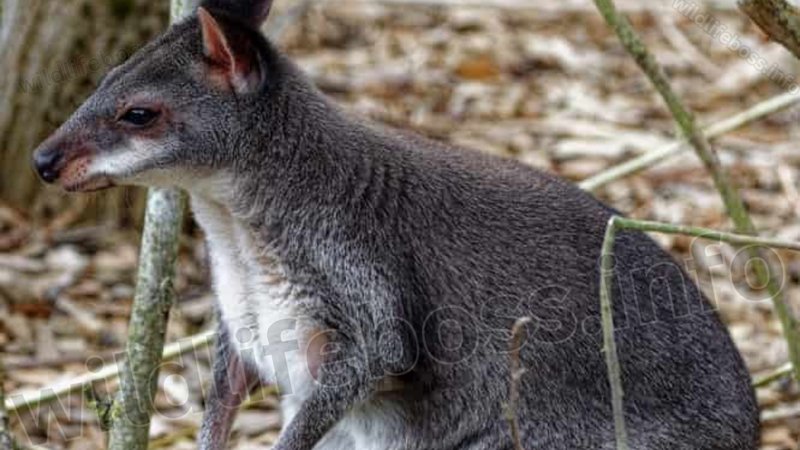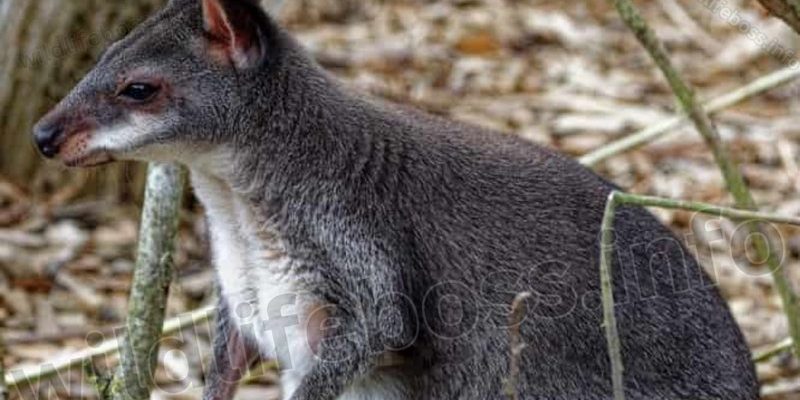
In this article, we’re diving into ten animals that have traits in common with the red kangaroo. We’ll explore everything from their habitats and physical appearances to their behaviors and diets. If you’re curious about these quirky creatures and how they differ from their hopping cousin, you’re in the right place.
1. Eastern Grey Kangaroo
When it comes to kangaroos, the eastern grey kangaroo is a close relative to the red kangaroo. You might say they’re like siblings in the kangaroo family, sharing similar features but with distinct differences. Eastern grey kangaroos are generally smaller than red kangaroos and have a grayish color instead of the reddish hue. This makes them stand out in their own way, especially when they’re hopping through grassy fields.
Their diet mostly consists of grasses and leaves, much like the red kangaroo. However, if you take a closer look, you’ll see that eastern grey kangaroos have a more pronounced facial structure and longer ears. This slight variation helps them adapt to their specific environment, which tends to be more wooded or grassy areas compared to the red kangaroo’s arid habitats.
If you ever get the chance to spot both types of kangaroos in the wild, just remember to look for their size and color differences. Eastern grey kangaroos are like the more reserved cousin, while red kangaroos are bold and vibrant in their appearance.
2. Antilocapra americana (Pronghorn)
Next up on our list is the pronghorn, a unique animal mostly found in North America. It’s not a kangaroo, but it shares the same general body shape and incredible speed. Pronghorns are built for running; they can sprint faster than any mammal in the Western Hemisphere, making them quite the daring creature in the wild.
While the pronghorn doesn’t have the strong hind legs of a kangaroo, it does have long, slender legs that enable it to cover vast distances quickly. Their coloration can vary, but they usually have a light tan coat with white markings. The major difference between pronghorns and red kangaroos lies in their habitats and social behaviors. While kangaroos are known to be more solitary, pronghorns often live in small herds.
So, if you see something that looks like a kangaroo darting across the plains of North America, it might just be a pronghorn—with a lot of speed to boot!
3. Wallaroo
Let’s not forget about the wallaroo, another cousin of the red kangaroo that often goes unnoticed. Wallaroos are a bit stockier than their red counterparts, with a more robust build that resembles a mini kangaroo. They inhabit rocky areas and bushlands in Australia, making them quite adaptable to different environments.
One of the most noticeable traits of wallaroos is their shaggy fur, which can range from gray to brown. Unlike the sleek appearance of red kangaroos, wallaroos have a rugged charm. Plus, they usually prefer to live in small groups or alone, which sets them apart from the more social kangaroos.
So, if you’re looking for an animal that looks like a kangaroo but is built like a tank, the wallaroo might be your best bet. They pack a lot of personality into their solid bodies!
4. Common Wallaby
Step into the world of wallabies, and you’ll find another animal that shares characteristics with the red kangaroo. The common wallaby is smaller and has a more compact body than its larger relatives. With their softer fur and endearing faces, they almost seem like the cuter version of kangaroos.
Common wallabies thrive in various habitats, from woodlands to coastal areas. One distinguishing feature is their long tail, which they often use for balance while hopping around. Unlike red kangaroos that roam the open deserts, common wallabies prefer more covered areas, which provide them protection from predators.
So next time you’re exploring the Australian bush, keep an eye out for these pint-sized kangaroo relatives. They may not be as grand as red kangaroos, but they definitely have their own charm!
5. Tammar Wallaby
Another wallaby to consider is the tammar wallaby. Imagine a common wallaby but a bit larger and with a different coloration. Tammar wallabies have a soft gray-brown coat and are known for their striking white stripes along their cheeks. They’re mainly found in Tasmania and parts of Australia, often seeking refuge in dense vegetation.
What sets them apart from red kangaroos is their size and behavior. Tammar wallabies are significantly smaller and tend to stay close to their shelter, whereas red kangaroos roam the open outback. Their diet consists mostly of grasses and leaves, similar to red kangaroos, but their feeding habits are often more cautious, reflecting their preference for hiding from potential threats.
So, when comparing tammar wallabies to red kangaroos, think of them as the more reserved cousins who prefer quieter gatherings under the shelter of trees.
6. Bennett’s Wallaby
Bennett’s wallaby is yet another charming relative of the red kangaroo. These wallabies are slightly larger than common wallabies and have a chocolate-brown coat with lighter underparts. They are also known for their distinctive long tails and large feet, which help them navigate through rough terrains.
What makes Bennett’s wallabies stand out is their social behavior. They often live in groups, a bit like kangaroos, but they tend to be more shy and secretive. While red kangaroos are bold and often seen out in the open, Bennett’s wallabies prefer to remain hidden in bushy areas to evade predators.
If you want to spot one, look for them in grassy habitats or near coastal scrub. The clear difference in behavior between Bennett’s wallabies and red kangaroos is like comparing a lively gathering to a quiet get-together.
7. Agile Wallaby
The agile wallaby deserves a spot on this list for its remarkable ability to adapt to various environments. These wallabies are smaller and more agile than red kangaroos, hence the name! With long, powerful hind legs, they can jump great distances, making them experts at escaping danger.
You might notice that agile wallabies have a unique pattern of stripes and a distinct coloration, which can be a mix of brown, gray, and cream. Unlike the solitary nature of red kangaroos, agile wallabies are often seen in small groups, hopping around in search of food.
So, if you’re on the lookout for an animal that shows off its athletic prowess, the agile wallaby is definitely worth noting. Their lively spirit and ability to adapt to different terrains remind us that everyone has their own style of hopping through life.
8. Quokka
Last but not least is the quokka—a small, friendly marsupial that looks like a fluffy ball of joy! Unlike kangaroos, quokkas are much smaller, about the size of a domestic cat. They’re famous for their beaming smiles and are often referred to as the “world’s happiest animals.”
Quokkas are native to a few islands off the coast of Australia, where they roam freely. Their diet mainly consists of leaves and grass, similar to what kangaroos eat. However, they tend to live in more confined areas and are often found in shrubland or coastal vegetation.
While quokkas may not be as large or powerful as red kangaroos, their endearing nature and playful demeanor make them a favorite among wildlife enthusiasts. If you ever come across one, you might find yourself smiling right back!
Exploring the world of animals similar to the red kangaroo is a delightful journey. Each of these creatures has its unique traits, which adds a rich layer to our understanding of wildlife. Whether it’s the agile wallaby hopping through the brush or the friendly quokka smiling for the camera, they all share traits that connect them to the larger kangaroo family while maintaining their distinct identities.
Next time you find yourself in Australia, keep your eyes peeled for these fascinating animals. They might just surprise you with their diversity and charm. Each encounter offers a glimpse into a world filled with wonder, reminding us of the beauty of nature and the vibrant lives that share our planet.

